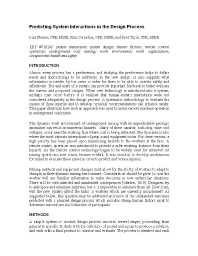Mining Publication: Predicting System Interactions in the Design Process
Original creation date: September 1999
It was evident that operators had adapted to the visibility and positioning difficulties of remote control operation but, in some cases, at the expense of health and safety. If this system change from on-board to remote operation had been investigated from a more global view including technical as well as human factors issues, some of these issues could have been resolved prior to implementation. It would have been easy to predict such problems as the visibility restrictions and that the illumination system on the remote mining machine would need to be changed. Many industries other that mining can use this approach to evaluate current and new design. If human factors are ignored until after major decisions have been made, it is difficult to make ore than minor changes. Simply put, the earlier human factors get involved in a design process, the better, and the safer the outcome will be (Chapanis, 1996).
Authors: LJ Steiner, KM Cornelius, FC Turin
Peer Reviewed Journal Article - September 1999
NIOSHTIC2 Number: 20000824
Am J Ind Med 1999 Sep 36(S1):58-60
See Also
- Considerations in Training On-the-Job Trainers
- Continuous Mining: A Pilot Study of the Role of Visual Attention Locations and Work Position in Underground Coal Mines
- Engineering Considerations and Selection Criteria for Proximity Warning Systems for Mining Operations
- A Gas Pressure-Based Drift Round Blast Design Methodology
- A Method for Evaluating System Interactions in a Dynamic Work Environment
- Mining Publications List: 1995 - 1999
- Optimizing Secondary Roof Support with the NIOSH Support Technology Optimization Program (STOP)
- Programmable Electronic Mining Systems: Best Practice Recommendations (In Nine Parts): Part 4: 3.0 Safety File
- Technology News 513 - Coaching Workshop for On-the-Job Trainers
- Toolbox Training on Flyrock Awareness
- Content source: National Institute for Occupational Safety and Health, Mining Program


 ShareCompartir
ShareCompartir
